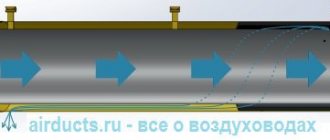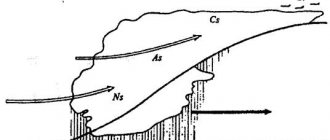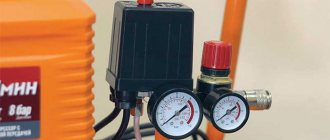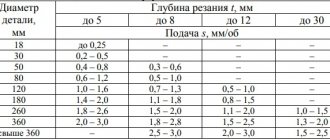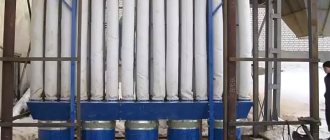Where is air velocity measurement required?
The operation of anemometers is common in a wide variety of areas - the purchase of a measuring device is necessary in any area where information about the characteristics of air flows is required. First of all, measurement with an anemometer is in demand at meteorological stations - using air speed indicators, specialists can predict many weather phenomena. Also, objects with industrial air conditioning, heating and ventilation systems are equipped with anemometers. The need to measure wind speed also arises in aviation, construction and installation work, energy, mining, agro-industrial complexes, underground communications and even sports (for example, a cup anemometer is used during competitions that depend on wind parameters: javelin throwing, paragliding, sailing regattas, rowing).
Selecting the right equipment
To solve specific problems related to determining the characteristics of air flows, it is important to choose the optimal model of the device. To do this, it is necessary to consider and take into account many aspects, including:
Depending on the scope of application, anemometers have two versions: stationary and portable. The first ones are powered from the network and are suitable for continuous measurement, parameter regulation, data accumulation and information transfer to a computer. Portable models allow episodic analysis of air speed at various points, recording the data obtained and transmitting them. The main requirement for each device, regardless of its modification, is that the measuring instrument must be certified and have a state verification document. Only in this case can the anemometer be allowed for operation, and its results guarantee accuracy and reliability.
Source
Anemometer using ultrasound
This model uses the characteristic feature of changes in speed sound characteristics when the direction and force of movement of air masses changes.
They differ as follows:
- Two-dimensional ultrasonic anemometers;
- Ultrasonic devices of three-dimensional type;
- Thermal anemometers.
The first type works in the mode of measuring the speed characteristics of horizontal gusts of wind, as well as indicating their direction.
The primary physical characteristics between the pulse passage times are measured by a three-dimensional special device. After which, he recalculates the results obtained in three components according to the wind direction.
The hot-wire anemometer has an additional ability. In addition to determining the three components of wind direction, it allows for the possibility of measuring the temperature of air masses. In this case, a method using ultrasound is used.
Duct Velocity Instruments
The ventilation system is a very complex system that consists of many functional components, from air ducts to ventilation units. Considering that for the correct operation of such a system many indicators are taken into account, the implementation of any more or less serious project of a ventilation and air conditioning system will not be complete without the use of measuring instruments. And measuring the speed in air ducts plays one of the most important roles for the proper functioning of the system.
Why do they measure air speed?
For ventilation and air conditioning systems, one of the most important factors is the condition of the supplied air. That is, its characteristics.
The main air flow parameters include:
SNiPs and GOSTs describe standardized indicators for each of the parameters. Depending on the project, the values of these indicators may vary within acceptable standards.
For example, for civil buildings the recommended speed of air movement through the main ventilation ducts is within 5-6 m/s. A correctly performed aerodynamic calculation will solve the problem of supplying air at the required speed.
But in order to constantly maintain this speed regime, you need to control the speed of air movement from time to time. Why? After some time, air ducts and ventilation channels become dirty, equipment may malfunction, and air duct connections become depressurized. Also, measurements must be carried out during routine inspections, cleanings, repairs, and in general, during ventilation maintenance. In addition, the speed of movement of flue gases, etc., is also measured.
Blade design
The device looks like a mill. According to the principle of operation, its propeller axis is oriented independently if the direction of air movement changes. For this purpose, a device similar to a weather vane is usually used.
If it is necessary to measure the speed of a moving constant flow, without changing it, then such turntables are installed in the air ducts of buildings and mines, the axis of which is rigidly fixed.
Currently, preference is given to other various designs that do not have moving parts.
What device measures air speed?
All devices of this type are compact and easy to use, although they have their own subtleties.
A device for measuring air speed is called an anemometer
Instruments for measuring air speed:
Vane anemometers are one of the simplest devices in design. The flow rate is determined by the rotation speed of the device impeller.
Temperature anemometers have a temperature sensor. When heated, it is placed in the air duct and as it cools, the air flow rate is determined.
Ultrasonic anemometers mainly measure wind speed. They work on the principle of determining the difference in sound frequency at selected control points of the air flow.
Pitot tube anemometers are equipped with a special small diameter tube. It is placed in the middle of the duct, thereby measuring the difference in total and static pressure. These are one of the most popular devices for measuring air in an air duct, but they have the disadvantage of being unable to be used in high dust concentrations.
Differential pressure gauges can measure not only speed, but also air flow. Complete with a pitot tube , this device can measure air flows up to 100 m/s.
Balometers are most effective when measuring air velocity at the outlet of ventilation grilles and diffusers. They have a bell that captures all the air coming out of the ventilation grille, thereby reducing measurement error to a minimum.
Types of anemometers
A modern anemometer produced by a professional organization may have several versions. The main types of air flow meters are:
- cup anemometer - has the simplest design, the blades of such a device are made in the form of hemispheres that rotate under the action of the air flow and measure its speed in one plane;
- blade or vane anemometer - the catching part of such a meter is shaped like a fan, its blades are capable of not only determining the speed of flows, but also setting their direction;
- Thermal anemometer is an improved type of equipment that allows you to determine the speed of air movement, its volume flow and temperature.
The use of such devices allows you to control environmental parameters, as well as monitor the microclimate in rooms of various types.
Features of air speed measurements
There are some nuances of working with different types of anemometers. As already mentioned, pitot tube anemometers cannot be used at high concentrations of solid particles, otherwise the tube will quickly become clogged and the instrument will fail. Thermal anemometers do not work in conditions of measuring high air flow velocities - over 20 m/s. When measuring speed in heated air flows (for example, in gas ducts), it is recommended to use a tube made of stainless steel rather than plastic.
Rating-review of the best anemometers
The rating considers the most functional, affordable anemometers that received the best user ratings.
RGK AM-30
Anemometer RGK AM-30 is a high-precision measuring equipment of compact size and light weight, which fits conveniently in a pocket, backpack or bag.
The device is easy to use; its body has a relief design that prevents the device from slipping and ensures reliable retention.
The model is equipped with an external impeller on a flexible wire for taking measurements in hard-to-reach places, temperature and magnetic induction sensors with a low degree of error.
The operating range is selected automatically.
The product is supplied with three AAA batteries and an instruction manual.
Specifications:
- type of device - vane;
- measurements - air flow speed/temperature;
- range of recorded speed - 0.5-20 m/s (±0.5%);
- range of recorded temperature - -10...50°C (±1%);
- units of measurement - m/s, ft/min, knots, km/h, mph, °F, °C;
- food - AAA elements;
- data display - display;
- features - display backlight;
- overall dimensions - 52x120x28 mm;
- device weight - 211 g.
Advantages
- ease of use;
- high sensitivity;
- there is a battery charge indicator;
- good accuracy of readings.
Flaws
- no case included;
- not the widest measurement range;
- democratic price tag.
ADA instruments AeroTemp 30
The high-precision ADA instruments AeroTemp 30 will provide professional measurement of air flow speed and temperature when monitoring the environment, checking ventilation systems, air conditioners and other equipment.
The model is characterized by compact dimensions, light weight, and ease of operation.
The anemometer allows you to measure temperature and air flow speed, including with specified parameters of instantaneous, minimum (temperature) or maximum values.
The device is equipped with a built-in impeller and a backlit display.
The auto-shutdown option ensures economical energy consumption of power supplies.
Specifications:
- type of device - vane;
- measurements - air flow speed/temperature;
- range of recorded speed - 0.4-30 m/s (±3%);
- recorded temperature range - -20...70°C (±1.5%);
- units of measurement - m/s, ft/min, knots, km/h, mph, °F, °C;
- food - AAA elements;
- data display - display;
- features - display backlight;
- overall dimensions - 56x178.5x30.5 mm;
- device weight - 84 g.
Advantages
- excellent build quality;
- wide temperature measurement range;
- small size and weight;
- affordable price.
Flaws
- no cover included;
- low sensitivity;
- high error.
MEGEON 11002
The MEGEON 11002 model with a built-in measuring element in real time will provide accurate measurements of air flow parameters such as its speed and temperature.
The anemometer is equipped with a display with automatic backlighting, an automatic shutdown option, and an indication of the power source charge.
The product is powered by a CR2032 battery.
The device body is ergonomically designed to prevent the device from slipping in your hands.
The device is equipped with an instruction manual and a CR2032 battery. The product comes in a convenient and practical blister.
Specifications:
- type of device - vane;
- measurements - air flow speed/temperature;
- range of recorded speed - 0.8-30 m/s (±5%);
- range of recorded temperature - -10...45°C (±2%);
- units of measurement - m/s, ft/min, knots, km/h, mph, °F, °C;
- power supply - CR2032 elements;
- data display - display;
- features - display backlight;
- overall dimensions - 45×118×21 mm;
- device weight - 68 g.
Advantages
- Ease of use;
- light weight;
- compactness;
- measurement of speed and temperature.
Flaws
- high error;
- not bright backlight;
- fast discharge of the power supply.
Testo 405i
The Testo 405i smart anemometer, controlled via the user’s mobile device, will allow you to measure air exchange, flow speed and temperature as simply and quickly as possible.
The model uses a thermistor temperature sensor.
To work with the device, you need to install a special application on your phone or tablet.
The software will allow you to view measurement data, read readings in hard-to-reach places, calculate air flow automatically, and use other practical functions.
The device is equipped with a telescopic tube (400 mm), power supplies, and a calibration protocol.
The anemometer supports mobile gadgets with iOS 8.3, Android 4.3 and higher, communication via Bluetooth 4.0.
Specifications:
- device type - thermal;
- measurements - air exchange, air flow speed/temperature;
- range of recorded speed - 0.5-30 m/s (±5%);
- range of recorded temperature - -20...60°C (±0.5%);
- Units: m/s, ft/min, °F, °C, cu.m. m/h;
- food - AAA elements;
- data display - mobile device;
- Features: iOS/Android support, Bluetooth connection;
- overall dimensions - 30×200×41 mm;
- device weight - 119.6 g.
Advantages
- compact device;
- work through the application;
- good sensitivity;
- excellent autonomy.
Flaws
- high price;
- no support for older versions of Android;
- speed measurement error.
Testo 410-2
The professional anemometer Testo 410-2 will provide quick and accurate measurement of air flow speed, humidity and temperature in offline mode.
The model is equipped with an integrated impeller with a diameter of 30 mm, a thermistor temperature sensor, and a built-in display with real-time information output.
The device is powered by two AAA batteries. The set of power supplies is enough for 2.5 days of battery life.
The device allows you to calculate the average value of the measurements taken.
The product is equipped with a protective cap, wrist strap, calibration protocol, and batteries.
Specifications:
- type of device - vane;
- measurements - humidity/speed/temperature of air flow;
- range of recorded speed - 0.4-20 m/s (±2%);
- range of recorded temperature - -10...50°C (±0.5%);
- units of measurement - m/s, ft/min, km/h, °F, °C;
- food - AAA elements;
- data display - display;
- features - display backlight;
- overall dimensions - 46×133×25 mm;
- device weight - 110 g.
Advantages
- convenient pocket format;
- excellent functionality;
- reliability of design;
- quality materials.
Flaws
- not bright display backlight;
- not the best autonomy;
- high price.
Testo 410-1
Anemometer Testo 410-1 with high metrological characteristics and advanced technical parameters guarantees the measurement of air flow speed and temperature with minimal error.
The device is equipped with a built-in impeller with a diameter of 30 mm.
The model allows you to quickly carry out point measurements at the outlets of air ducts with further calculation of the average measurement value.
The device is equipped with a thermistor temperature sensor, a protective cap, a wrist strap, a factory calibration protocol, and a set of power supplies.
Specifications:
- type of device - vane;
- measurements - air flow speed/temperature;
- range of recorded speed - 0.4-20 m/s (±2%);
- range of recorded temperature - -10...50°C (±0.1%);
- units of measurement - m/s, km/h, °F, °C;
- food - AAA elements;
- data display - display;
- features - display backlight;
- overall dimensions - 46×133×25 mm;
- device weight - 110 g.
Advantages
- quality of workmanship and materials;
- ease of use;
- high accuracy;
- good sensitivity.
Flaws
- no moisture test;
- few units of measurement;
- high price tag.
Testo 410i
The Testo 410i pocket smart anemometer allows you to simply and effectively measure air exchange, air flow speed and temperature in ventilation, heating, air conditioning and other equipment.
The presented device uses a thermistor temperature sensor.
Measurement registration and management is provided by a convenient mobile application installed on the user’s smartphone or tablet.
The device works with devices running iOS 8.3, Android 4.3 and higher, to which it connects via Bluetooth version 4.
The delivery set includes a protective cover, power supplies, and a calibration protocol.
Specifications:
- type of device - vane;
- measurements - air exchange, air flow speed/temperature;
- range of recorded speed - 0.4-20 m/s (±2%);
- range of recorded temperature - -20...60°C (±0.5%);
- units of measurement - m/s, ft/min, °F, cubic meters. ft/min (CFM), °C, cu.m. m/h;
- food - AAA elements;
- data display - mobile device;
- Features: iOS/Android support, Bluetooth connection;
- overall dimensions - 21x154x43 mm;
- device weight - 117.8 g.
Advantages
- compact device;
- convenient protective cap;
- ease of setting up a connection with a smartphone;
- convenient application functions.
Flaws
- high price;
- no support for Android 4.2 and below;
- not the best ergonomics.
MEGEON 11006
The professional level device MEGEON 11006 is designed to measure air flow speed and temperature in real time without the use of additional equipment.
The model, consisting of two separate blocks, is equipped with a remote-type sensor, a large display with bright backlighting, and a durable ergonomic body, convenient for everyday use.
The device is powered by a Krona battery.
The product is equipped with a case for storage and transportation, a main unit with a protective casing, a module with an impeller, an instruction manual, and a power supply.
Specifications:
- type of device - vane;
- measurements - air flow speed/temperature;
- range of recorded speed - 0.5-45 m/s (±3%);
- range of recorded temperature - -10...45°C (±2%);
- units of measurement - m/s, ft/min, knots, km/h, mph, °F, °C;
- food - element "Crown";
- data display - display;
- features - display backlight, Beaufort scale, squally wind indication;
- overall dimensions - main block 152x78x38 mm, block with impeller 177x66x30 mm;
- device weight - 276 g.
Advantages
- high accuracy;
- bright display;
- ease of operation;
- Ease of use.
Flaws
- inflated price tag;
- heavy weight;
- no humidity measurement.
How measurements are taken
Air velocity measurements can be made in ducts, at duct outlets, at ventilation grilles or diffusers.
When the speed measurement is carried out directly in the air duct, the measurement location should be located after the flow passes through the filters. You should find a special hole on the air duct, which is intended for control and measuring operations (such holes are often closed with a pitometer plug). You can also use a cleaning hatch.
When taking measurements with a pitot tube, it is inserted into the air duct, directed against the air flow.
What does a car's odometer show?
Operating principle of the odometer
The principle of operation of the device is as follows: for one kilometer traveled by a car, the wheel makes the same number of revolutions. Knowing how many revolutions it has made in total during a particular path, it is easy to calculate the kilometers traveled, and this is what is displayed on the odometer.
Interesting materials:
Where are granite and marble used? Where is the printer used? Where is LDPE used? Where is silver solder used? Where is grade D coal used? Where is air temperature measured? Where to measure body temperature with a Pyrometer? Where was the gramophone invented? Where was the first television in the world invented? Where was the first television invented?
